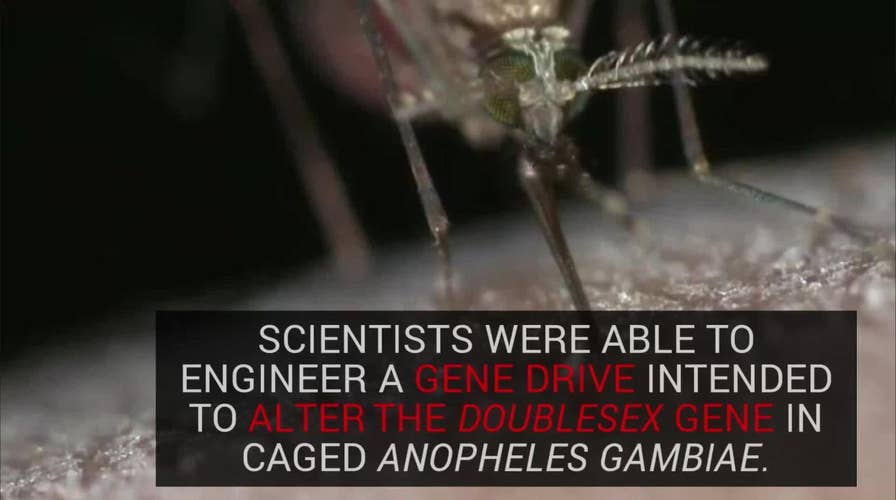Experiment that kills mosquitoes to stop malaria a success
Researchers at Imperial College London were able to stop the reproduction of caged Anopheles gambiae, a species of mosquito that is one of the major culprits in the spread of malaria.
An Ohio mother has issued a stark warning to others about the importance of using bug spray after her 7-year-old son’s headache turned into a life-threatening diagnosis. Joshua Gay, of Canton, played soccer outside on Aug. 27 and started complaining of a headache a few days later, The Canton Repository reported.
“I checked him for a fever and took him to school,” Carissa Gambs, an emergency room nurse at Aultman Hospital, told the news outlet. “The teacher sent me an email later saying he had a fever.”
Gambs said she followed typical protocol and gave him Children’s Tylenol and Motrin before he went to spend the night at his father’s house. The next morning, however, the fever spiked to 104.2.
'MIRACLE' TWINS HEAD HOME AFTER BEATING INCREDIBLE ODDS
“I thought it was just an early flu or back-to-school germs,” Gambs told the news outlet.
Gambs said there were no outward signs that would be concerning, but the fever prompted her to keep him home from school on Aug. 30.
“I came into his room and called him, but he was unresponsive,” she told The Canton Repository. “He was having a focal seizure.”
Joshua was rushed to Aultman Hospital before he was transferred to Akron’s Children’s Hospital where he was diagnosed with La Crosse encephalitis.
The virus is transmitted to humans through an infected mosquito bite and may cause fever, headache, nausea, vomiting, and tiredness in patients who exhibit symptoms, according to the Centers for Disease Control and Prevention (CDC). Severe cases in children under 16 can result in seizures, coma, paralysis or even death, and it may leave patients suffering from long-term disabilities.
While there is no specific treatment for the virus, symptoms are typically managed on a case-by-case basis. According to the CDC, the best way to prevent the virus is by using insect repellent, or wearing long sleeves, long pants and socks.
“This has been a parent’s worst nightmare, the things that have happened and the fears that we had,” Gambs told the news outlet.
RARE 'POLIO-LIKE' ILLNESS DIAGNOSED IN 6 MINNESOTA KIDS
Joshua was discharged from the hospital in September, but not before he was intubated and placed on a ventilator for six days while doctors worked to control his seizures and bring his fever under control. He has returned to school but faces at least four weeks of physical therapy to help with his balance issues and leg weakness, as well as follow-ups with several neurological specialists, and occupational therapists. He is also at a higher risk for seizure reoccurrence.
Gambs said the experience has left her son terrified of medical professionals, but that he has come a long way in his recovery.
“Life will go back to normal I think,” Gambs wrote, in part, in a Sept. 24 Facebook post, after Joshua was released. “I see bad things often at work [at the ER]. I might be bothered for a few days, have a lasting memory but my life goes on. I’m struggling. I cry, I’m angry, I’m easily irritated, I can’t sleep and if I do now I have nightmares.
“I am very thankful for the people in my life,” the post said. “I have had more support than I know what to do with. My child came home. That is all I asked for. He is home and stronger each day. He looks normal. His legs are weak. The glue is almost out of his hair. He has a scar on his right arm. He has toddler type tantrums now as a side effect, perhaps life long. He is at a 30 percent chance for seizures as well. But he is alive and home.”

